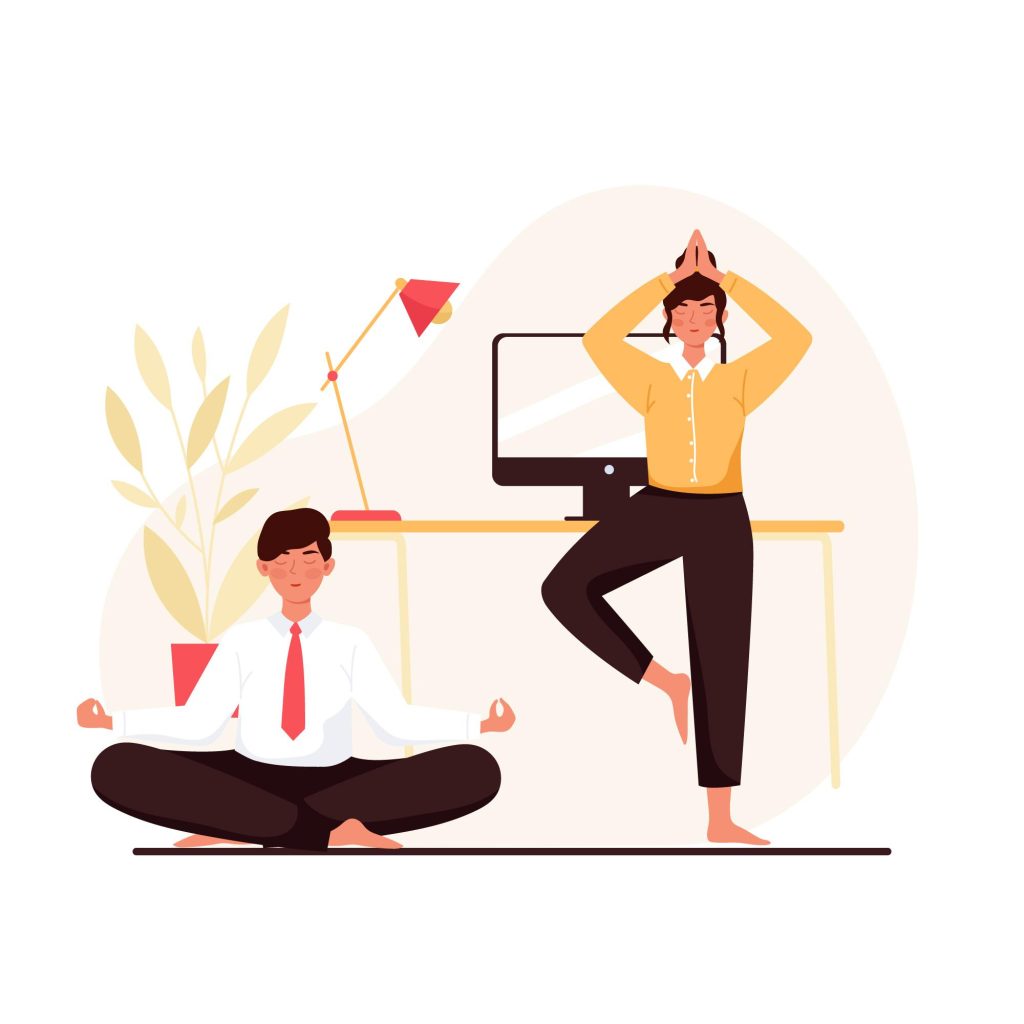How to Create a Work-Life Balance That Works for You
Emma Brooks July 18, 2025
In today’s fast-paced world, achieving a healthy work-life balance can feel like an elusive goal. With the rise of remote work, always-on digital connectivity, and increased work expectations, it’s easy to feel overwhelmed and like your personal life is being squeezed out. However, maintaining a balance between work and life isn’t just a luxury—it’s essential for both your well-being and long-term productivity.
Fortunately, finding a work-life balance that works for you isn’t impossible. By implementing intentional strategies, managing time effectively, and adjusting your mindset, you can successfully juggle professional and personal demands without sacrificing your health. In this article, we will discuss the current trends in work-life balance and practical steps you can take to achieve a healthier and more productive lifestyle.

The Importance of Work-Life Balance
Work-life balance isn’t just a buzzword; it has a profound impact on your physical and mental health. Research consistently shows that achieving a work-life balance improves job satisfaction, enhances overall well-being, and reduces stress. According to a Harvard Business Review article, employees who maintain a good balance between work and personal life are more engaged, productive, and motivated.
- Physical Health: Chronic stress, often caused by poor work-life balance, can contribute to issues like high blood pressure, anxiety, and even heart disease. Prioritizing rest, exercise, and family time can help mitigate these risks.
- Mental Health: Maintaining boundaries between work and personal life reduces feelings of burnout and fatigue. It allows time for recovery, hobbies, and socializing, all of which are crucial for mental well-being.
- Job Satisfaction: When employees feel they can manage both personal and professional responsibilities effectively, they are more likely to experience job satisfaction and remain loyal to their employers.
Emerging Trends in Work-Life Balance for 2025
As work culture evolves, several emerging trends have made work-life balance more attainable for many employees. These trends are influenced by advancements in technology, changing attitudes towards work, and the growing awareness of mental health importance.
1. Flexible Work Hours and Remote Options
With the pandemic proving that remote work is effective, many companies have adopted hybrid models or flexible work hours. This flexibility allows employees to structure their workdays to accommodate family, personal interests, or health needs.
- Flexible Schedules: By giving employees the autonomy to choose when they work, businesses can reduce stress and allow people to achieve a balance that aligns with their personal needs. Some companies offer compressed workweeks, where employees work longer hours for fewer days.
- Remote Work: Many companies are allowing employees to work from home permanently or on a rotating basis, which eliminates commuting time and provides a better work-life integration.
2. Mental Health Support Programs
As the importance of mental well-being becomes more recognized, companies are increasingly offering mental health resources to help employees manage stress and burnout.
- Employee Assistance Programs (EAPs): Many companies now provide EAPs that offer free counseling, wellness resources, and stress management workshops.
- Mindfulness and Wellness Initiatives: Workplaces are also incorporating wellness programs, offering everything from meditation apps to yoga sessions, aimed at reducing stress and promoting a healthier work-life integration.
3. Technology for Better Time Management
Advancements in time management tools and productivity apps have revolutionized how employees organize their workday. With the rise of AI-powered tools, managing work-life balance has never been easier.
- Task Management Apps: Tools like Trello, Asana, and Notion help employees organize their to-do lists, prioritize tasks, and track their progress in real-time.
- AI-Powered Productivity: Artificial intelligence now helps employees by scheduling tasks, sending reminders, and even providing recommendations for optimal work times.
Why it matters: These technological innovations empower employees to work more efficiently, manage their time better, and, as a result, spend more quality time away from work.
Practical Steps to Achieve a Work-Life Balance That Works for You
Achieving a work-life integration that truly works for you requires deliberate action and clear strategies. Here are practical steps that can help you take control of your schedule and foster a healthier work-life balance.
1. Set Boundaries Between Work and Personal Life
One of the most important steps to achieving work-life balance is establishing clear boundaries between your work time and personal time. This is especially important for remote workers who may find it difficult to “switch off” when working from home.
- Create a Dedicated Workspace: Whether you have a home office or just a desk in the corner of your living room, having a designated workspace helps mentally separate work from personal life.
- Set Work Hours: Try to set specific work hours and stick to them. This helps avoid overworking, as it can be tempting to check emails or finish tasks outside your designated time.
- Communication is Key: Let your colleagues and family know when you’re “off the clock” and establish expectations for communication during your personal time.
2. Prioritize Tasks and Delegate
Not all tasks are created equal. Prioritizing tasks ensures that you focus on the most important responsibilities, allowing you to free up time for personal activities.
- Use the Eisenhower Matrix: Categorize tasks by urgency and importance. Focus on what matters most and avoid spending too much time on low-priority tasks.
- Delegate: Don’t be afraid to delegate tasks to others, whether at work or home. Sharing responsibilities reduces stress and allows you to focus on tasks that align with your personal and professional goals.
3. Incorporate Regular Breaks and Downtime
It’s essential to take regular breaks throughout the workday to recharge. The Pomodoro Technique, which involves working for 25 minutes and then taking a 5-minute break, is a highly effective method for maintaining productivity without burning out.
- Physical Activity: Incorporating exercise into your daily routine—whether it’s a walk during lunch or a gym session after work—improves both physical and mental health.
- Mindful Relaxation: Taking short breaks for mindfulness or deep breathing exercises helps clear your mind and reduce stress.
4. Learn to Say No
Sometimes, achieving work-life balance involves saying no to additional responsibilities that could overwhelm you. Learning to say no doesn’t mean you’re not a team player; it means you’re protecting your time and energy.
- Be Honest About Your Capacity: Assess whether you have the time and resources to take on new tasks before committing to them.
- Set Clear Expectations: If you’re unable to take on additional work, communicate this respectfully and offer alternative solutions if possible.
5. Unplug and Disconnect
One of the greatest challenges of work-life balance in the digital age is constant connectivity. Make time to unplug and fully disconnect from work-related technology.
- Turn Off Notifications: Disable email and app notifications after work hours to avoid feeling constantly tethered to work.
- Digital Detox: Designate specific times during the day when you can disconnect completely from your devices. This will allow you to recharge and focus on non-work-related activities.
Conclusion
Achieving a healthy work-life balance isn’t about finding a one-size-fits-all solution. It’s about finding strategies that work for your unique lifestyle and personal goals. In 2025, the trends of flexible work hours, mental health support, and technological advancements will continue to shape how we approach our work-life balance.
By setting clear boundaries, prioritizing tasks, incorporating regular breaks, and learning to disconnect, you can create a work-life balance that supports both your personal well-being and professional success.
Remember, work-life balance isn’t a destination—it’s an ongoing journey. With the right strategies, you can continue to maintain balance as both your personal and professional lives evolve.
Reference
- Importance of Work-Life Balance – https://hbr.org
- Mental Health & Work-Life Boundaries – https://hbr.org
- Flexible Work & Remote Trends – https://www.mckinsey.com





